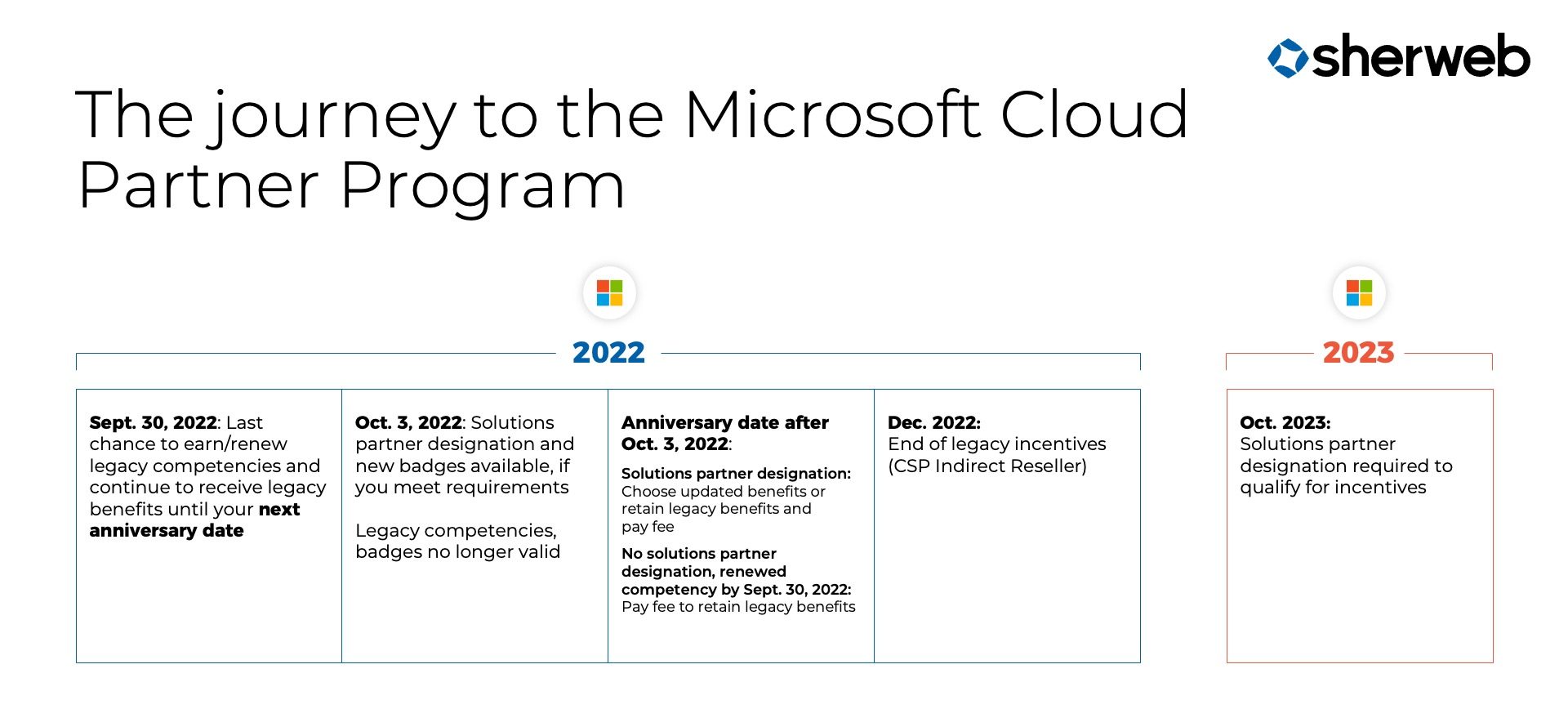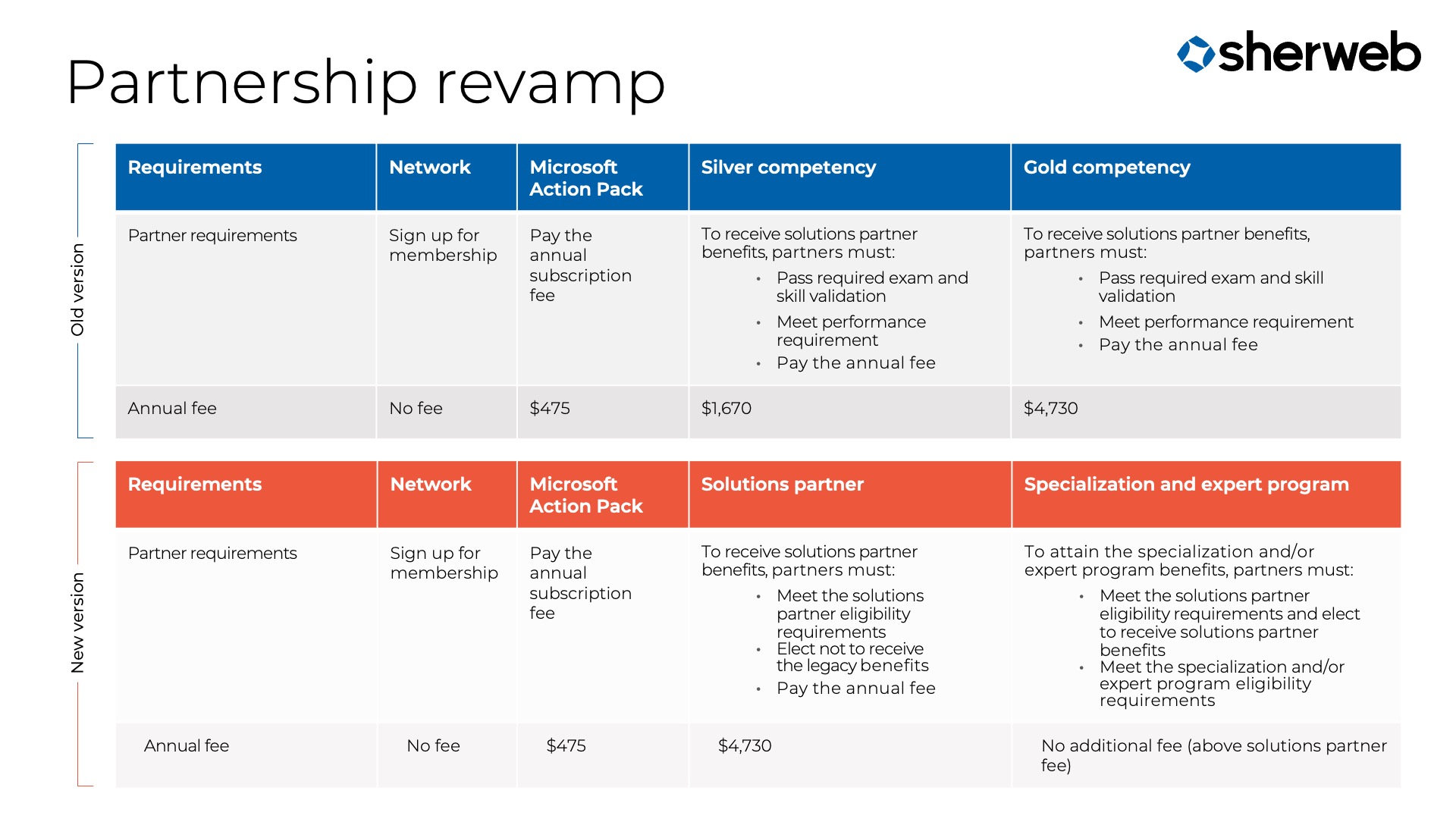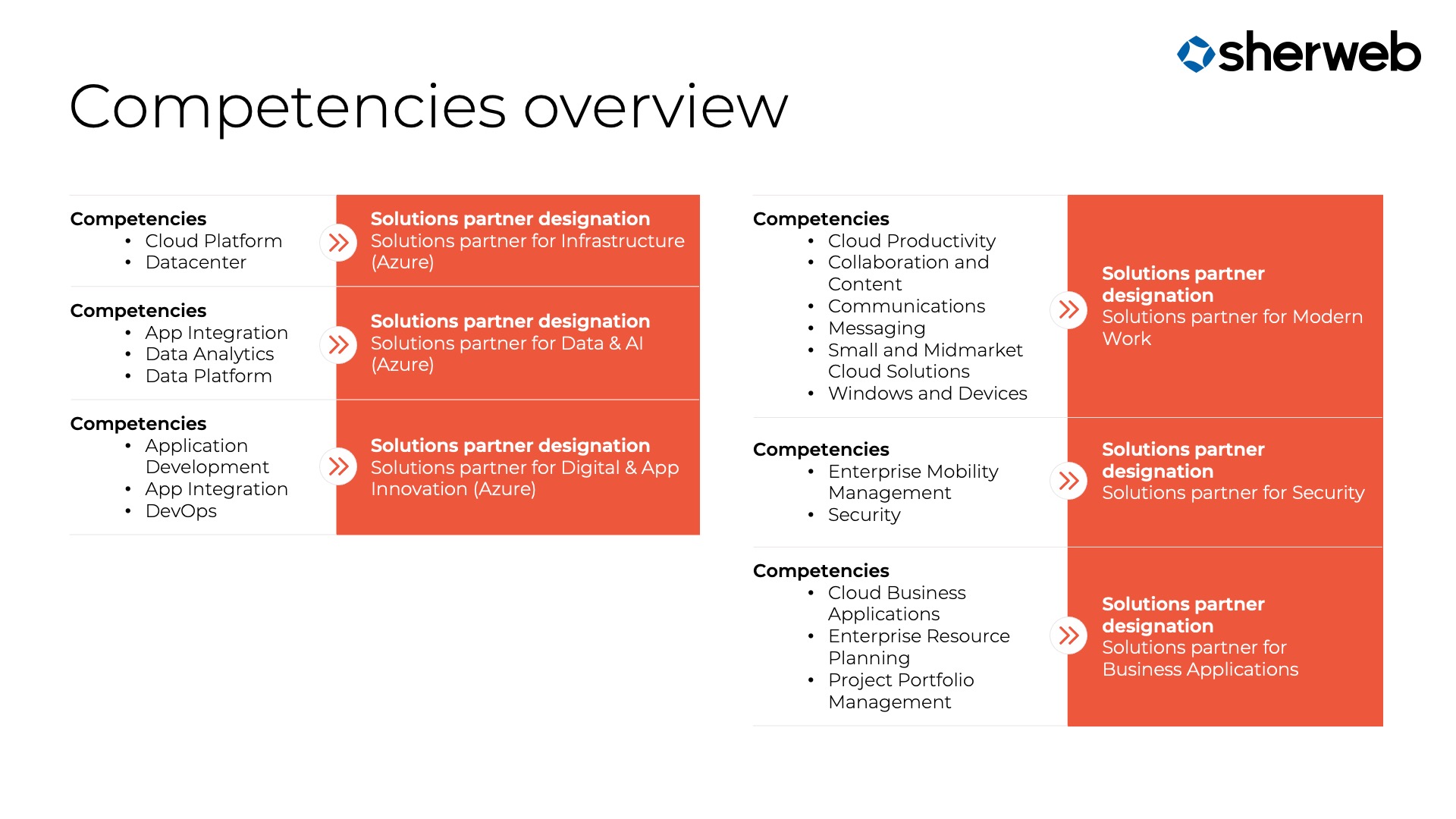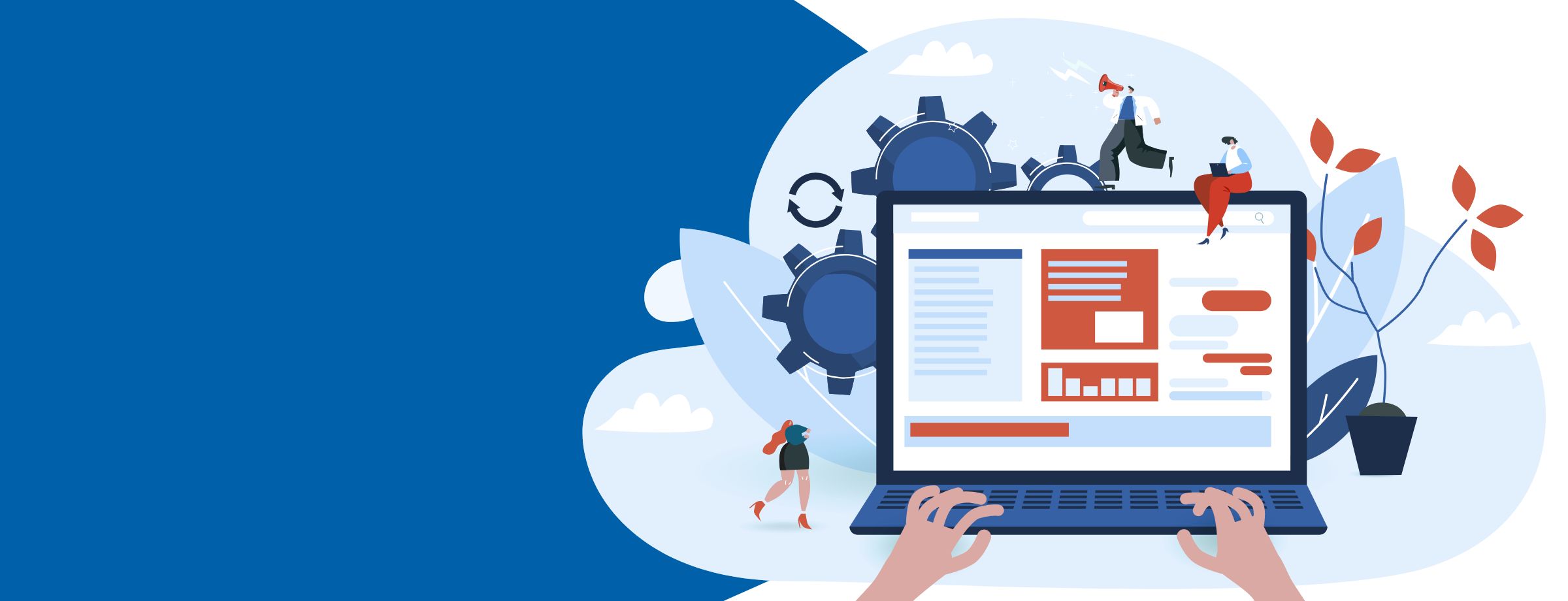Last year Microsoft announced big changes to its partner programs, and the time to act is drawing closer. On Oct. 1, 2022, the Microsoft Partner Network became the Microsoft Cloud Partner Program, bringing with it several changes to competencies and incentives and shaking up how Microsoft partners and resellers interact with the Microsoft ecosystem. Fortunately, there’s still time for current partners to prepare for potential impacts.
The new Microsoft Cloud Partner Program
The change from Microsoft Partner Network to Microsoft Cloud Partner Program reflects Microsoft’s efforts to simplify channel programs across the three clouds of Microsoft 365, Dynamics 365 and Azure under one umbrella. Whether a partner resells Microsoft products and solutions, develops solutions and applications based on Microsoft platforms or delivers IT services, they will all attain certifications, specializations, benefits and incentives according to the same revamped system.
Sounds simple enough, but how does this play out in practice? Firstly, the way partners qualify for the Microsoft Cloud Partner Program is based on two criteria: Solutions partner designations and advanced specializations. Secondly, legacy incentives will phase out by Oct. 1, 2023, meaning that all partners should take care to consider their options—including mergers, acquisitions and strategic partnerships—to mitigate any negative consequences.

Solutions partner designations
Doing away with Silver and Gold partner levels, Microsoft partners are now encouraged to differentiate themselves in at least one of six solution areas. Doing so will earn them a Solutions partner designation, which highlights a partner’s expertise for potential customers and qualifies them for relevant benefits and incentives. While existing competencies do match up with the new designations, partners will need to renew them once the program changes take full effect in October.
Eligibility for a Solutions Partner designation is based on a partner capability score. This score is determined across three metrics:
- Performance: Net customer adds
- Customer success: Customer usage growth and number of solution deployments
- Skilling: Certifications, advanced certifications and exams
It should be noted here that the fee to obtain a Solutions partner designation is roughly the same as the previous Gold competency level. Current Silver partners can therefore expect a substantial jump in the cost of skilling and necessary requirements for acquiring a designation. Again, this might prompt some businesses to consider strategic partnerships in order to maintain their status in the Microsoft ecosystem.

Advanced specializations
After achieving a Solutions partner designation, Microsoft partners can further distinguish their technical expertise by attaining an advanced specialization. Based on current Gold competencies, advanced specializations also align with Microsoft’s six solution areas. Note that partners must maintain certain certifications in order to validate their specializations.
Incentives and product benefits
Just as Microsoft incentives and product benefits used to be based on Silver and Gold competencies, going forward they will be tied to the new Solutions partner designations. While partners still have time to plan, the sooner they prepare, the more equipped they’ll be for the impending change.
Partners with legacy incentives will have two options:
- Attain a Solutions partner designation: Meet the necessary requirements as soon as possible and immediately become eligible for incentives
- Purchase a legacy benefits package: If all a partner’s legacy competencies were renewed prior to Sept. 30, 2022, they can keep their incentives until their renewal date in 2023, up to Oct. 1 when legacy incentives will officially expire.
Note that partners can’t do both options—purchase a benefits package to maintain legacy incentives while simultaneously achieving a Solutions designation to become eligible for new incentives—but must essentially choose between switching sooner or later.
Preparing for the new Microsoft Cloud Partner Program: Sherweb insights
We repeat: the sooner Microsoft partners prepare for impending changes to incentives and product benefits, the easier the transition will be. It’s also important to remember that current Silver partners probably have the most work ahead of them. To help illustrate what we mean, below are a few potential scenarios for how things might play out, including recommended actions from experts at Sherweb.
Scenario #1: Limited business with Microsoft
If your business currently has between $0 and $2000 in monthly recurring revenue (MRR) for Microsoft 365, Office 365 and/or Dynamics 365, $0 in monthly Azure consumption and no Microsoft certifications, you should probably stick to Microsoft Action Pack subscriptions. This means you’ll continue to purchase licenses and support capabilities as usual, and don’t need to worry about meeting any new requirements. However, you might want to consider working with a provider partner before October 2023, after which you can then leverage the competencies and specializations of that partner for your own benefit.
Scenario #2: Current Silver partner with limited MRR and competencies
If your business has between $3000 and $10,000 MRR for Microsoft 365, Office 365 and/or Dynamics 365, up to $2000 in MRR for Azure consumption and one or two employees with certifications, it’s time to start looking at the new Solutions partner designations. The Modern Work and Infrastructure designations should be of particular interest. Furthermore, exploring partnerships or a potential merger might be an option for businesses in this group to maximize return on incentives and be more competitive.
Scenario #3: Current Silver or Gold qualified partner with moderate MRR and some competencies
If your business has between $10,000 and $40,000 MRR for Microsoft 365, Office 365 and/or Dynamics 365, between $2000 and $10,000 MRR in Azure consumption and between two and five employees with Microsoft certifications, the first step is to ensure your current Silver competency for Cloud Platform are up to date. Partners in this category might also want to consider a merger or acquisition with a similar Microsoft partner to increase their reach and competitiveness.
Scenario #4: Current Gold partner with advanced specializations
If your business currently has $60,000 or more in MRR from Microsoft 365, Office 365 and or Dynamics 365, $20,000 or more in MRR for Azure consumption and 10 or more employees with certifications, first of all, congratulations. You might now want to consider making the switch to becoming a designated Microsoft Solutions partner to get a jumpstart on earning incentives under the new structure before it’s officially required in October. Finally, whereas partners with less Microsoft business might want to look into combining forces with another partner to qualify for updated designations, partners in this scenario might instead look into acquiring smaller providers to add to their breadth of specializations.

Confused? You’re not alone
As if the Microsoft ecosystem wasn’t complex enough before, it’s understandable that current partners might be flummoxed by all these changes. Don’t stress! There are plenty of resources available to help you.
As an award-winning Microsoft partner and value-added cloud solutions provider, Sherweb is committed to helping other IT providers and resellers navigate these changes and continue to make the most out of their relationships with Microsoft. Check out this webinar for more information about changes associated with the Microsoft Cloud Partner Program. Current Silver partners—who will arguably be the most impacted by these changes—should also watch this webinar for recommendations on how to respond. Looking for an expert partner to help you make sense of it all? Join Sherweb’s partner program.




